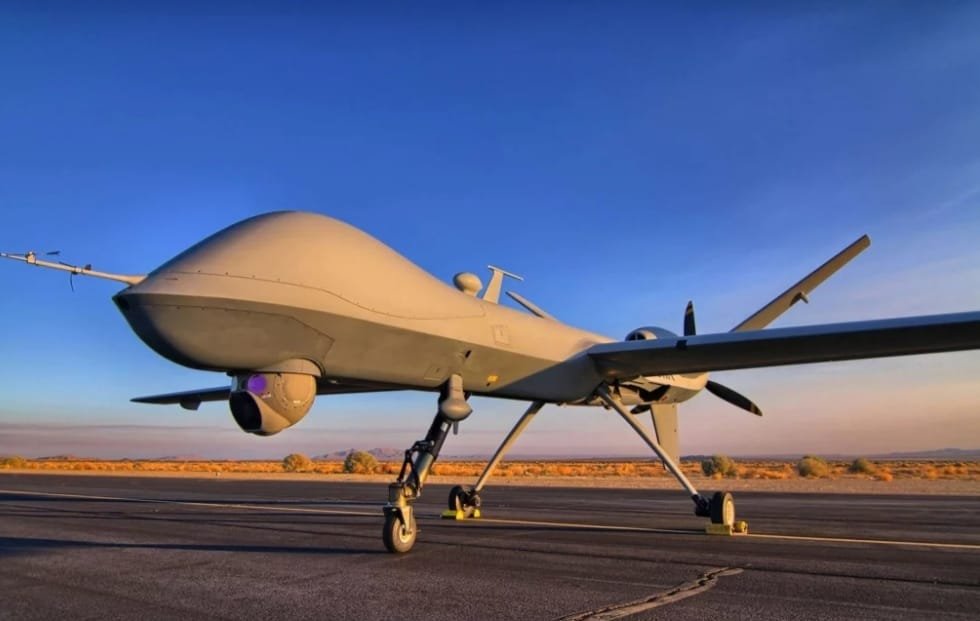
MQ-9 Reaper Enhanced for Better Cybersecurity and Anti-Aircraft Defense
General Atomics Aeronautical Systems, Inc. (GA-ASI), in collaboration with cybersecurity firm Shift5, announced on May 9, 2024, significant updates to the MQ-9A Reaper remotely piloted aircraft. These enhancements aim to strengthen the aircraft’s defenses against evolving cyber threats and improve its survivability in contested airspaces.
The MQ-9A Reaper, a cornerstone of unmanned aerial operations for the U.S. and its allies, will be equipped with new capabilities including Shift5’s onboard cyber anomaly detection and predictive maintenance technologies. These systems are designed to protect the aircraft from potential cyber-attacks that could compromise mission data or operational functionality. The enhancements are particularly relevant given the increasing reliance on remotely piloted systems in military operations, which presents new vulnerabilities in cybersecurity.
Originally flown in 2001 and funded by GA-ASI, the MQ-9A was developed based on the experiences gained from the company’s Predator RPA, marking a significant evolution in performance and reliability. The aircraft has been adopted by several national air forces, including the U.S. Air Force, the Royal Air Force, the Italian Air Force, the French Air Force, and the Spanish Air Force, as well as by the U.S. Department of Homeland Security and NASA. Engineered for versatility and reliability, the MQ-9A features a Honeywell TPE331-10 turboprop engine, enhanced with Digital Electronic Engine Control (DEEC) for improved performance and fuel efficiency, particularly at lower altitudes.
The aircraft’s triple-redundant avionic systems and fault-tolerant flight control system are designed to meet, and even exceed, the reliability standards of manned aircraft. With a payload capacity of 3,850 pounds, including up to 3,000 pounds of external stores, and equipped with advanced sensors like the Electro-optical/Infrared (EO/IR) systems, Lynx® Multi-mode Radar, and multi-mode maritime surveillance radar, the MQ-9A can carry a wide array of weapons and sensors. It offers unmatched operational flexibility with over 27 hours of endurance, speeds of 240 KTAS, and the ability to operate up to 50,000 feet.
Additionally, the MQ-9A’s capabilities continue to expand with the introduction of the Extended Range (ER) variant, which includes upgrades such as wing-borne fuel pods and reinforced landing gear, extending its endurance from 27 to 34 hours and enhancing its operational flexibility. This continuous improvement ensures that the MQ-9A remains a vital asset for persistent surveillance and strike missions, adapting to the emerging needs of its operators.
Moreover, the updates include the development of a new Airborne Battlespace Awareness and Defense (ABAD) pod. This pod aims to provide the MQ-9A with advanced sensory capabilities to detect and counter anti-aircraft and missile threats. Designed to integrate with the existing systems on the MQ-9A Block 5 Medium-Altitude, Long-Endurance Tactical (MALET) Extended Range RPAs, the ABAD pod is equipped with cutting-edge electronic warfare technology from BAE Systems and the AN/AAQ-45 Distributed Aperture Infrared Countermeasure System (DAIRCM) from Leonardo DRS.
The initiative stems from the collaborative efforts between GA-ASI and Shift5, established to address the critical needs of the United States Special Operations Command (USSOCOM) and the Air Force Special Operations Command (AFSOC). The partnership leverages Shift5’s expertise in cybersecurity solutions, initially developed by veterans of the U.S. Army Cyber Command. The Shift5 platform provides comprehensive operational data and cybersecurity insights, enabling operators to quickly move from data analysis to decisive action.
The enhancements to the MQ-9 Reaper underscore the ongoing commitment to adapting U.S. and allied defense strategies to counter both traditional and emerging threats. As unmanned systems continue to play a pivotal role in military operations, ensuring their resilience against cyber attacks and physical threats is paramount to maintaining operational effectiveness and safeguarding key military assets.

